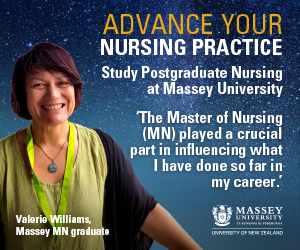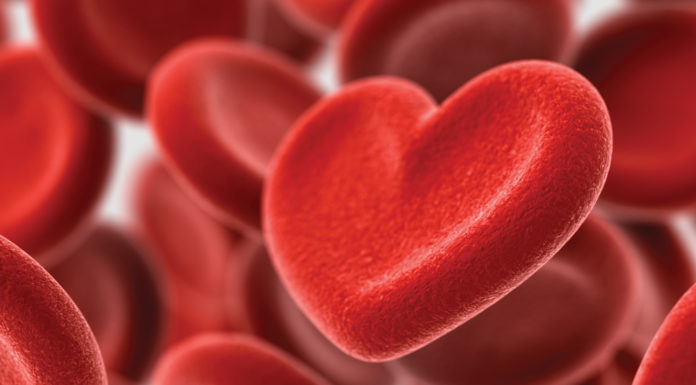Some call them “the bloodhounds”.
It’s a nickname the nurses of Waikato Hospital’s Patient Blood Management (PBM) team can laugh about as one part of their job is to ‘sniff out’ and reduce blood product wastage.
But the service’s wider mission is ‘promoting and supporting everything blood’ and its ethos is that every drop of blood – whether a patient’s own or donated – is a valuable resource and should be respected as such.
Russelle Westleigh, one of the three senior nurses working for Waikato District Health Board’s thought-to-be-unique PBM service, says they see themselves as advocates for the people who donate blood, the patients needing blood support, and the DHB that spends about $13 million a year on blood products.
The team was founded in 2015 under the clinical lead of anaesthetist Dr Scott Robinson and works closely with the New Zealand Blood Service to try and reduce unnecessary blood transfusions and keep staff informed about ‘everything blood’. The team’s work includes pre-operative anaemia (POA) assessment to help boost patients’ haemoglobin and iron stores; educating doctors and nurses on transfusion best practice; and looking for ways to minimise blood loss.
The ‘bloodhounds’ have been effective. Julie Retter, a senior nurse who has been with the team since it started, told the recent Clinical Nurse Specialist Society conference that in its first year the team’s work saved the DHB around $2.4 million.
Treating pre-operative anaemia
Transfusions are one of the most overused treatments in modern medicine, says Retter.
The former midwife and women’s health nurse says research shows that people do much better if they “keep their own blood in their own veins”. Unnecessary transfusions not only increase the risk of adverse transfusion reactions or infections, but also use up the limited, and costly, resource that is donated blood.
So ensuring that a patient’s blood is as good as it can be before elective surgery in order to reduce the need for blood transfusions is a major role for the team’s nurses because alongside the increasing numbers of older patients requiring hip and knee surgery is an increase in anaemia.
Patients at risk of pre-operative anaemia are identified at the anaesthetic assessment clinic and the PBM team ensures that those with anaemia are put on oral iron – and sometimes IV iron – so they have boosted haemoglobin and ferritin levels before they go into theatre.
“So the chances of them requiring a blood transfusion just because they are anaemic is really quite reduced,” says Retter.
And the research shows that getting through surgery without needing a transfusion shortens patients’ lengths of stay and reduces their risks of readmission through infections and other complications.
Fast-track cancer patients are usually given iron infusions of ferric carboxymaltose, as they need to be ready for surgery within a month, but hip and knee patients are often given oral iron for the two months or so before their surgery is scheduled.
In 2016 the PBM team had 1,153 patients go through its pre-operative anaemia service, with 146 receiving some form of treatment and monitoring before their surgery. An average of 66 patients every three months had their GPs contacted regarding their anaemia and some patients had surgery delayed due to more life-threatening conditions being diagnosed.
‘Why use two, when one will do?’
The aim is not only to keep people’s own blood in their veins, but also not to waste blood that other people have donated.
So now blood products having to be ‘binned’ will see a PBM team nurse turning up on a ward to find out why.
This led to the nickname ‘bloodhound’ and sometimes being seen as a “little bit precious”, says Westleigh, a former orthopaedic nurse.
But Westleigh and Retter stress that their job is not about blaming busy nurses on the ward but about taking a patient-centred approach to educating staff about good transfusion practice and making the point that donated blood is precious in more ways than one.
“Some person has walked off the street and given that blood in good faith that it will be used to help someone,” says Retter.
Blood is also a substantial cost to the DHB. ‘Why use two, when one will do?’ – a slogan adopted by a 2010 Auckland DHB evidence-based project to promote the use of single unit transfusion of red blood cells (RBC) rather than the formerly routine two – is also being used by Waikato. The DHB now has a policy that, apart from critical or trauma patients, the norm should be a single unit transfusion and the patient then being clinically reassessed before deciding whether a second unit is needed.
Not only does the research indicate that the risk of adverse effects increases with every unit transfused but, if a transfusion for any reason does not go ahead, the blood bank only allows a half-hour window for ‘redepositing’ a blood unit back in the bank – otherwise it is discarded. “If you are a minute over, you’re a minute over and the unit gets discarded,” says Retter. (Blood units can be safely transfused within four hours of leaving blood bank refrigeration.)
Thinking twice about taking blood samples
Educating doctors and nurses to think twice about whether blood tests are appropriate is another plank of the team’s work.
A blood test takes up to 5ml of blood a time and Retter says some of its ICU patients can have 15–20ml a day taken from them.
“That 15–20ml can drop your haemoglobin quite dramatically – particularly in some of our elderly patients,” says Retter. “If you keep taking blood tests off patients, then all of a sudden you may have a patient with anaemia you’ve got to treat.”
She says historically such tests were just done without a second thought and the team’s job is to encourage people to stop and think, “Do they really need all that blood?” or “Is that test necessary?”
“We are challenging those historic practices.”
And if a patient is anaemic, they may encourage clinicians to do a ‘micro-collect’ which involves taking a much smaller amount of blood, as they would for a baby. “It [a micro-collect] is not the ideal, but sometimes we need to go outside the ideal for a patient. It is doable, but we wouldn’t expect them to do it for every patient.”
But there are some patients that require clinicians to look outside the norm – including, adds Westleigh, Jehovah’s Witness patients who have indicated they won’t accept some blood products, which puts limitations on the treatments available if the patients become severely anaemic. “So we try and prevent them from becoming anaemic in the first place, like preventing too much blood-taking.”
It’s all part of the brief for nurses whose job is ‘everything blood’. The results to date have been a steady downward trend since the service began in RBC usage per patient discharge – saving both dollars and drops of that precious donated blood for patients who need them.
SOME BLOOD FACTS
- There are around 147,000 donations a year.
- About 111,000 people are active donors.
- Hospitals need 3,000 donations a week to meet medical demands.
- Around 29,000 people a year are helped by blood donations.
- There has been a national reduction in the demand for red blood cells since 2010.
- There has been an increased demand for blood products made from plasma, including fresh frozen plasma, cryoprecipitate and intravenous immunoglobulin.
- Blood products are used for: accident victims 18 per cent; orthopaedic surgery 7 per cent; other surgery 11 per cent; heart disease 8 per cent; liver and kidney disease 6 per cent; other medical conditions 12 per cent; babies and pregnant women 6 per cent; and children 3 per cent.
Source: New Zealand Blood Service website: www.nzblood.co.nz.

























